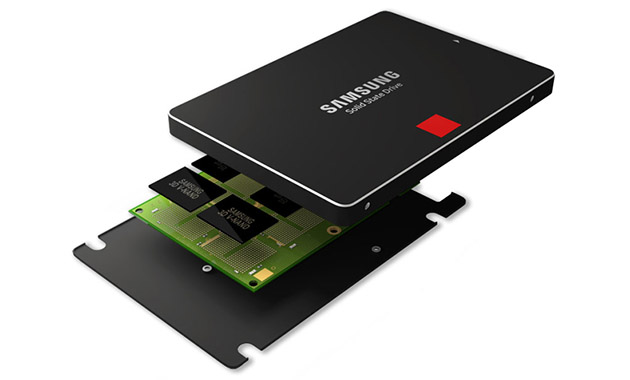
For more than a year, Geoff Gasior and his buddies at The Tech Report have forced six solid state drives to continuously write and rewrite 10GB of large and small files, pushing the technology to its limits to see how long it would take before the drives fizzle out and die. We’ve been told time and time again that SSD failure rates far exceed those of their hard disc brethren (in the long run), and that they can suddenly die without any SMART warning, as was experienced by Linux kernel creator, Linus Torvald, a little over a year ago. But has anything changed? Despite such horror stories, The Tech Report’s findings demonstrate that SSDs can handle the equivalent of “thousands of years of average use.” Allow me to elaborate.
The six SSDs recruited for Gasior’s suicide mission include the following: Corsair Neutron Series GTX, Intel 335 Series, Kingston HyperX 3K, Samsung 840 Series, and a Samsung 840 Pro. The test aimed to determine how many writes can be completed before failure as well as the changes in performance characteristics and health statistics as more writes accumulated.
While there are no moving parts with an SSD, the semiconductor elements will eventually wear out and fail. The experiment explored the weakness central in flash memory: NAND degradation. NAND — short for Negated AND or NOT AND — is a logic gate that stores data by trapping electronics inside billions of individual memory cells. These cells are separated from one another by an insulating layer that normally prevents outside electrons from getting in and inside electrons from getting out. By supplying a voltage to the cell, electrons can be induced to flow through the barrier in a process called tunneling; electrons are drawn in when data is written and are expelled out when data is erased.
Unfortunately, repeated back and forth traffic slowly disintegrates the physical integrity of the insulator, degenerating its ability to confine the electrons within the cell. Similarly, some electrons get stuck in the insulator and impart a negative charge that further narrows the cell’s usable voltage range. As this window continues to shrink, it becomes increasingly difficult to read and write data quickly and reliably.
So, what resulted from Gasior’s test you ask? The Corsair Neutron Series GTX, Intel 335 Series, Kingston HyperX 3K, and Samsung 840 Series were the first four SSD’s to tap out, but not before absorbing far more damage than their official endurance specs proclaim, which, relatively speaking, is far more damage than the average user can inflict. Intel reports that the 335 Series can withstand 20GB of writes per day for the entire duration of three-year warranty; this equates to about 21,900 GB of data. Gasior’s units all surpassed this amount within a single year whereas the last unit survived until it reached 1.2 PB (Petabytes) of data writing. To put that into perspective, consider that a single 1 PB equals 1000 terabytes and 1 terabyte equals 1000 gigabyte.
Interestingly enough, the 840 Pro and a second HyperX 3k are still going strong as of Dec. 4, 2014, having surpassed two petabytes of writes! Gasior points out that the SSDs inside his desktop have logged less than two terabytes of writes after more than couple years, figuratively implying that it’ll take thousands of years before they’ve reached in petabytes.
Source: Techreport
Advertisement
Learn more about Electronic Products Magazine





